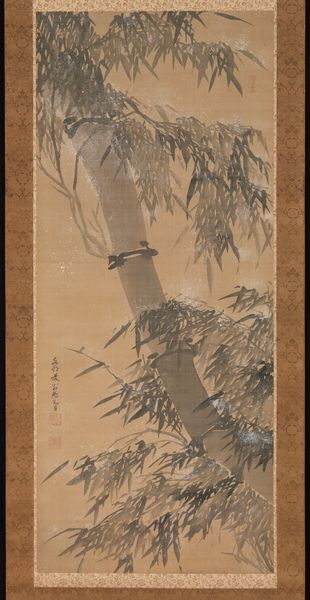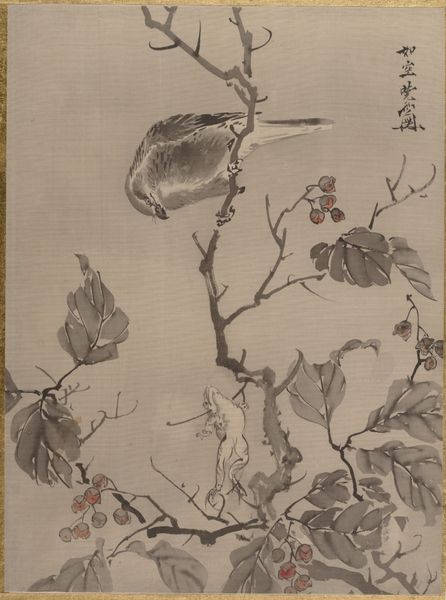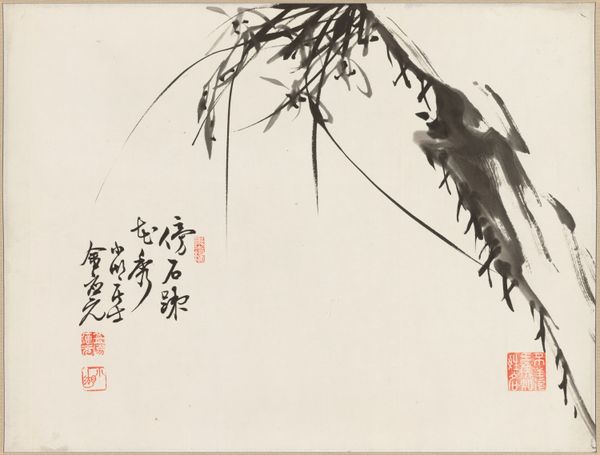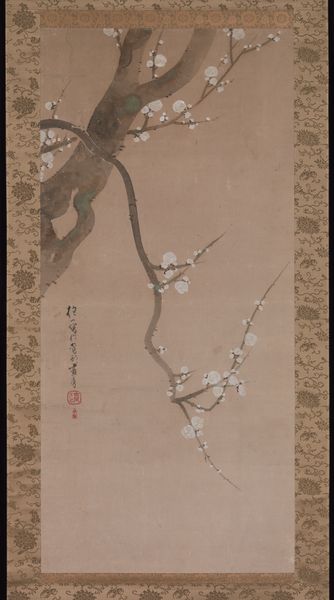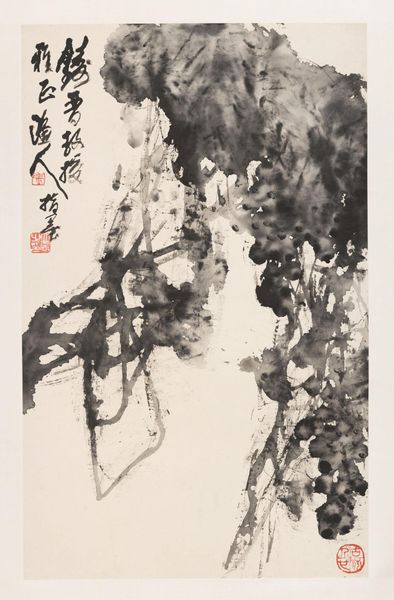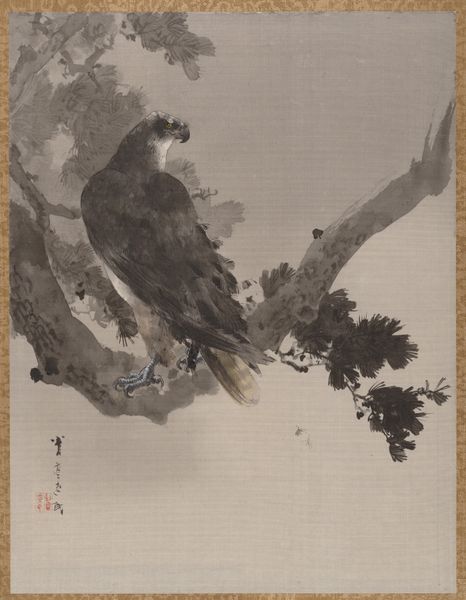
drawing, paper, ink
#
drawing
#
water colours
#
ink paper printed
#
asian-art
#
landscape
#
paper
#
ink
#
abstraction
#
line
#
calligraphy
Dimensions: height cm, width cm
Copyright: Rijks Museum: Open Domain
Editor: Here we have Kōkai Tōryū’s Zen Painting and Calligraphy, likely created sometime between 1779 and 1853. It’s an ink drawing on paper. I find the brushstrokes so delicate, yet the overall composition feels quite bold. What strikes you about this piece? Curator: Ah, yes, Kōkai Tōryū… A master of capturing the ephemeral, wouldn’t you agree? It feels like a breath caught on paper. It's a dance between form and emptiness. The sparse use of ink draws my eye in, making me wonder if he chose the subjects or if they chose him, in a fleeting moment. Like he was seeing the world inside out. I almost hear the dripping ink morphing into haikus. What kind of sensations does that calligraphy evoke? Does it speak, whisper, or perhaps even sing to you? Editor: That's lovely. It feels more like a whisper to me, definitely contemplative. Does the abstract quality connect to its Zen roots? Curator: Absolutely. Zen art often aims to bypass the rational mind. Do you feel how the artist is embracing imperfection? It invites us to find beauty in simplicity and the unvarnished truth of a single moment. What do you suppose this imperfection suggests? Perhaps embracing transience, celebrating a single drop, as the brushstroke creates the line? Editor: That makes perfect sense. I guess I had focused more on the image than the thought behind it. Thanks for reframing it for me! Curator: My pleasure. Isn't it beautiful how a single artwork can become a meditative landscape of its own?
Comments
No comments
Be the first to comment and join the conversation on the ultimate creative platform.

